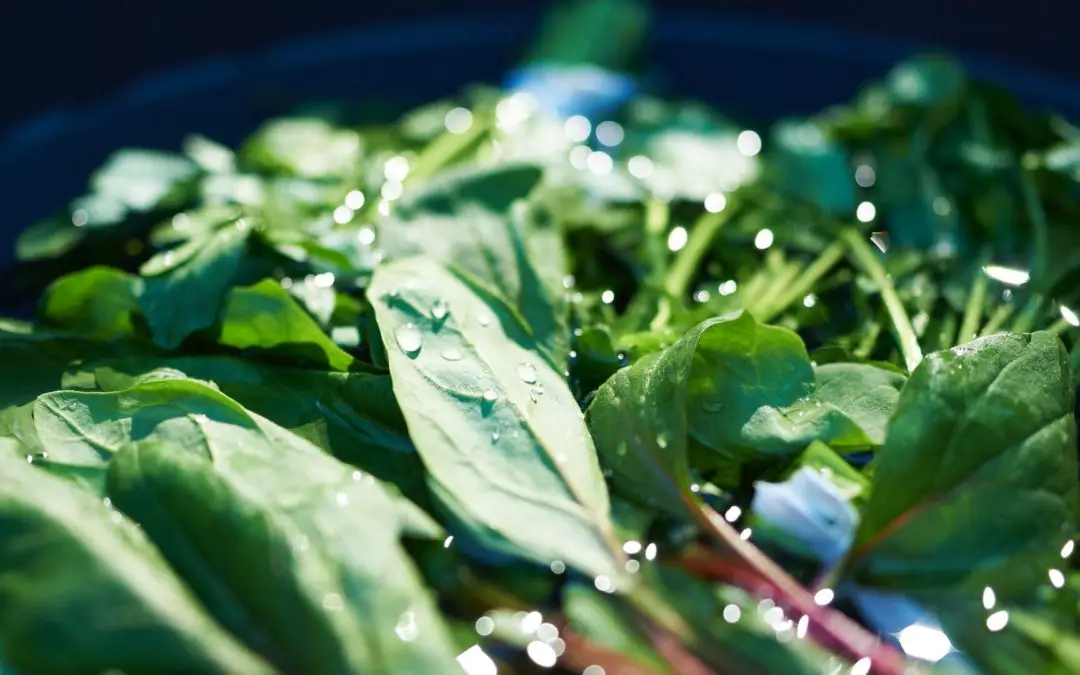Soak for 6-12 hours for best results. Too long and you risk drowning the seeds. Too short and they wont hydrate fully. A 6 hour soak and a 12 hour soak for sunflower microgreens give the same yield. A 10” x 20” tray was split into 2 groups. Half of the seeds were soaked for 6 hours, half for 12 hours.
Two different yields were calculated: clean and total. Clean sellable microgreen yield was measured, only the pristine, picture perfect greens. Total yield was also measured (including shoots with seeds still attached, and stunted or discolored microgreens.)
Clean yield of microgreens for the 6 hour soak for 255g of weight from 607 shoots, or 0.42 g/shoot. The yield from the 12 hour group was 251g for 592 shoots, or 0.42 g/shoot.
Within error, I’d say there’s no difference! A 6 hour soak yields just as much as a 12 hour soak.
Total yield for the 6 hour soak was 267g of weight from 668 shoots, or 0.40 g/shoot. Total yield for the 12 hour soak was 273 g of weight from the 677 shoots, or 0.40 g/shoot. Again, no difference, especially accounting for the accuracy of the scale, and any slight uneven-ness in the germination of the seed, or water availability.
Materials and equipment
- 1” deep 10” x 20” germination tray with holes
- 1” deep 10” x 20” germination tray with no holes
- Water
- 3% food grade hydrogen peroxide
- 5% acetic acid white vinegar
- Scale
- T8 fluorescent lighting (2x 48” bulbs with ballast)
- Scissors
- 680g (moist) Soil Promix Premium Potting Soil
- 150g Black Oil Sunflower Seeds from Mumm’s
- French coffee press (to keep seeds submerged during soak).
Procedure
For this experiment I wanted to see if there was a difference in germination rates and even-ness between a 6hour soak and 12 hour soak. Backing up a little, the soak is intended to evenly hydrate the seeds before planting, and ensure the sunflower sprouts are more similar in size. Sunflower shoots in particular have a tendency to mature unevenly, and they need to shed their hulls before harvest otherwise they can be stunted, discolored, and unappealing.
For this experiment I was expecting 12 hours to be a more even germination than 6, but that there could possibly be some more mold issues. To control this problem I soaked each group of seeds in 1 quart of water with a splash of 3% hydrogen peroxide, and a splash of 5% white vinegar.
I followed the normal microgreens growing steps, with a couple additions:
I used a French coffee press to keep the seeds submerged evenly. A French press has a fine metal mesh on a plunger, it’s designed to keep coffee beans under water while brewing, and works great for seeds too!
I counted every single shoot as I harvested, so I could get an idea if there was variation in the size of the shoots.
One difference was that I split the tray into 6 sections. The idea was to alternate each section between a 6 hour and 12 hour soak. I figured if there was any unevenness in my shelving, or if the light was slightly brighter on one side than the other, this would help even it out. In the end I didn’t notice and trends from one end to the other. The middle of the tray definitely grows higher than the edges.
Discussion
Could the growth be constrained by the amount of light? What are we really testing here?
It seems like the soak should have the biggest influence on the germination rate, how many “late” plants there are. Plants that are just getting going when the majority are ready for harvest. Normally I judge when they’re ready for harvest by the flavor. But for this experiment, I didn’t want to eat the microgreens because it would change the yield. I harvested as soon as the first true leaves were just becoming visible.
One variable that should have a big impact on germination rate is seed to soil contact. I think this was pretty consistent.
Relative humidity in my grow area is really low, it’s January, so we’re at 25% at 21 C. This might be why there’s no real mold problems as well.
There’s always the possibility that 8 hours is the magic number, and 6 and 12 hours are slightly worse.
This experiment raised a few interesting questions for further exploration:
- How can we improve yield? What was the limiting factor? Water? Lighting? Genetics?
- What happens if you soak sunflower seeds for 24 hours? 36 hours? When do they drown?
- How important is the blackout period on even germination? Was a 3 hour blackout period long enough?
Interesting oddities
One of the plants had 3 leaves (3 cotyledons). I ate it. It tasted great. I’ll be digging into this a bit more and posting an article on it soon.
Another plant was yellow, and never turned green. It tasted really mild.
Improvements and recommendations
Here are a few of the things I’ll change if I redo this experiment. Let me know if there’s something you think I’m missing or could do better.
- Brighter lighting, either higher output bulbs, or moving the bulbs closer to the shoots
- Expand and use multiple trays for each group
- Measure the weight of the soil dry, and sift it more finely to remove more debris
- Cut the microgreens in a more uniform way, I used scissors to cut them
- It would be good to press the seeds into the soil with something flat. I used another microgreen tray, which has ridges on the bottom, so the seed-to-soil contact could have been a little bit more even. But it should have been the same between groups.
- Try a wider range of times. Maybe go for 4 hours, 8 hours, 24 hours next time.
Conclusion
Don’t worry about timing your sunflower seed soak. It looks like anything in the range of 6 to 12 hours gives a consistent result.

I’m Alex Lafreniere. I learned a lot about plants when I built and operated a landscaping company. But, there’s always more to learn. Ever since travelling across the world, I’ve wanted to find ways to bring more tropical and exotic plants into my life. This is the site where I share everything I’ve learned with you.
This site is owned and operated by Plant Hardware, a sole proprietor headquartered in Calgary, Canada. Plant Hardware is a participant in the Amazon Services LLC Associates Program, an affiliate advertising program designed to provide a means for sites to earn advertising fees by advertising and linking to Amazon.com.Plant Hardware may also participate in affiliate programs with Bluehost, Clickbank, CJ, ShareASale, and other sites. Plant Hardware is compensated for referring traffic and business to these companies.

